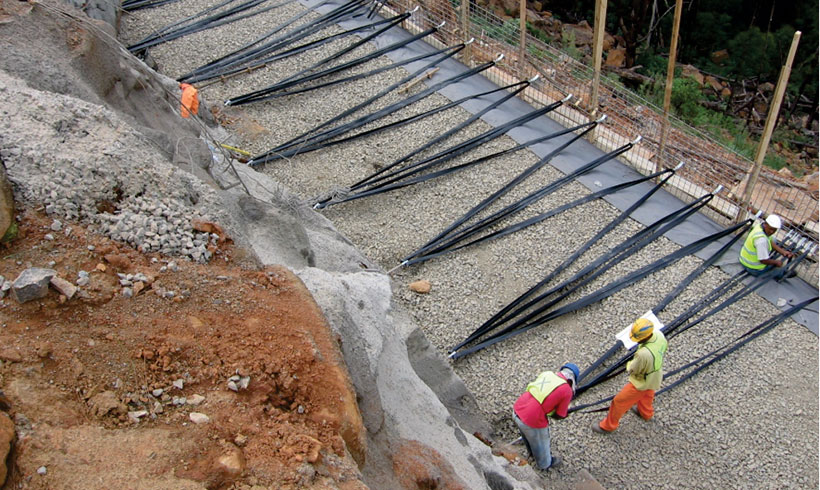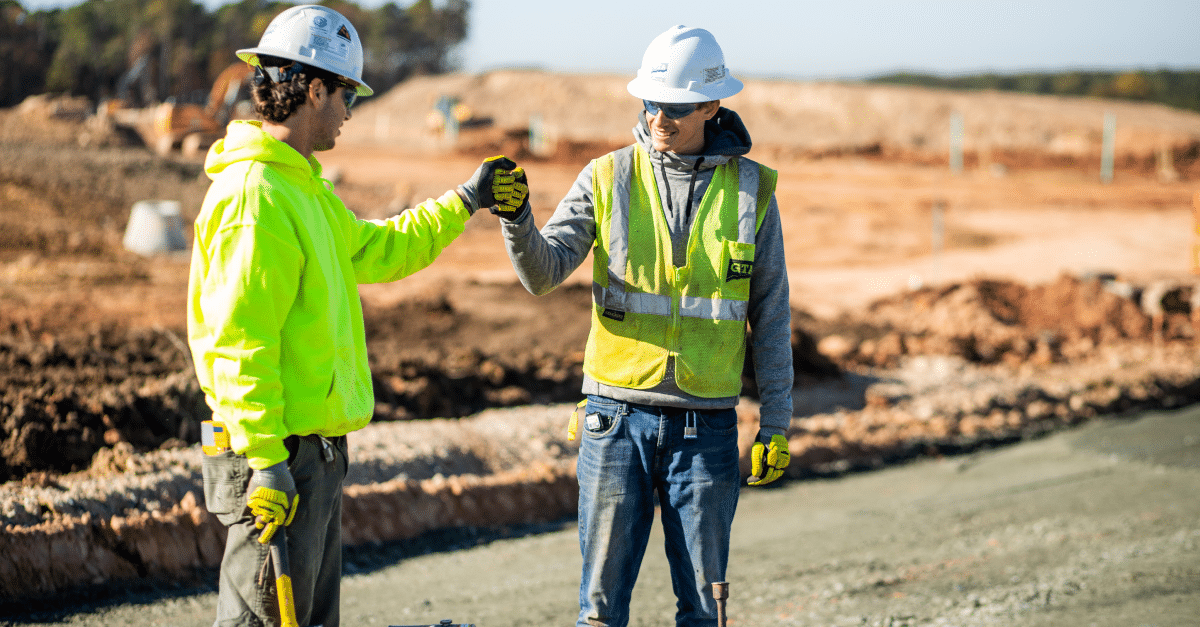Some Known Details About Geotechnical Engineering For Construction Projects
Some Known Details About Geotechnical Engineering For Construction Projects
Blog Article
The Ultimate Guide To Geotechnical Engineering For Construction Projects
Table of Contents9 Easy Facts About Geotechnical Engineering For Construction Projects DescribedLittle Known Facts About Geotechnical Engineering For Construction Projects.Geotechnical Engineering For Construction Projects - QuestionsThe Single Strategy To Use For Geotechnical Engineering For Construction ProjectsThe Definitive Guide for Geotechnical Engineering For Construction ProjectsAll About Geotechnical Engineering For Construction ProjectsSee This Report about Geotechnical Engineering For Construction Projects
and Kovacs, W. (1981 ), An Introduction to Geotechnical Engineering, Prentice-Hall, Inc. Deep Scan Technology (2023 ): Deep Check Technology reveals hidden structures at the website of Denmark's highest structure. "Geofrost Coring". GEOFROST. Retrieved 20 November 2020. Han, Jie (2015 ). Concepts and Technique of Ground Enhancement. Wiley. ISBN 9781118421307. RAJU, V. R.Ground Improvement Technologies and Situation Histories. Singapore: Study Posting Solutions. p. 809. ISBN978-981-08-3124-0. Ground Improvement Principles And Applications In Asia. Pariseau, William G. (2011 ). Style evaluation in rock mechanics. CRC Press. Hegde, A.M. and Palsule P (Geotechnical Engineering for Construction Projects).S. (2020 ), Performance of Geosynthetics Reinforced Subgrade Subjected to Repetitive Automobile Loads: Speculative and Mathematical Researches.
Cengage Knowing, Stamford, 666 p. Atkinson, J., 2007. The technicians of dirts and structures. The Observational Approach in ground engineering concepts and applications.
Geotechnical Engineering For Construction Projects for Beginners
Lab and area testing plays a critical duty in this procedure. By extracting examples from the planet's subsurface and applying a suite of tests, geotechnical engineers can anticipate the behavior of soil layers and assess their suitability for numerous construction endeavours. The significance of geotechnical engineering in civil design can not be overstated, attributable to numerous aspects: The first action in any kind of geotechnical research study entails determining the dirt type at the construction site.
The structure acts as the bedrock of any kind of construction project. Choosing the ideal structure type is a choice that hinges on the thorough evaluation offered by geotechnical design.

Geotechnical site investigation is a crucial step in the preparation and implementation of any type of construction project. It entails the collection and evaluation of data connected to the physical buildings of soil and rock under a suggested construction site. This details is essential for the layout and building and construction of risk-free, steady, and lasting frameworks.
Geotechnical Engineering For Construction Projects Can Be Fun For Anyone
, additionally recognized as subsurface exploration, involves a collection of tasks aimed at establishing the soil, rock, and groundwater conditions at a building website. The key objectives are to recognize potential geotechnical risks, analyze the design residential or commercial properties of subsurface products, and give recommendations for the design and building of structures, maintaining walls, and various other frameworks.
This might consist of geological maps, aerial pictures, previous examination records, and historic information. The desk research helps in recognizing possible geotechnical problems and planning the subsequent fieldwork. Following the desk study, a website reconnaissance is performed to visually evaluate the website and its surroundings. This involves observing the topography, water drainage patterns, existing frameworks, greenery, and any indicators of instability or disintegration.
Indicators on Geotechnical Engineering For Construction Projects You Should Know
Shallow examination pits are dug deep into to directly observe and sample the dirt and rock. This approach is valuable for studying the upper layers of the subsurface and identifying near-surface dangers. Non-invasive geophysical techniques, such as seismic refraction, my review here ground-penetrating radar (GPR), and electric resistivity tomography (ERT), are made use of to map subsurface conditions and find anomalies.
Soil and rock samples collected throughout the area examination are subjected to research laboratory testing to establish their physical and mechanical residential properties. These tests supply essential information for geotechnical evaluation and style.
The main benefit of geotechnical website investigation is ensuring the safety and security navigate to these guys of frameworks. By comprehending the subsurface problems, engineers can design foundations and various other structural components that can stand up to the lots and ecological pressures they will certainly go through. This lessens the risk of settlement, subsidence, and architectural failing.
The 10-Minute Rule for Geotechnical Engineering For Construction Projects
For instance, understanding soil attributes can lead the choice of excavation techniques, dewatering approaches, and ground renovation procedures. This makes certain reliable and risk-free construction methods. Geotechnical site investigations are often required by constructing codes and laws. Following these demands guarantees conformity with lawful and safety and security criteria, avoiding possible lawful liabilities and task hold-ups.
This info is important for job managers, designers, and contractors in creating sensible timetables, budgets, and contingency plans. Geotechnical Engineering for Construction Projects. Skyscraper in a Coastal AreaIn a coastal city, a skyscraper property building was intended on a website with suspected loose sand down payments and a high water table. An in-depth geotechnical examination, consisting of borehole exploration, CPT, and geophysical surveys, was performed
The 6-Second Trick For Geotechnical Engineering For Construction Projects
Based upon these findings, the foundation layout was modified to include deep stack structures expanding into secure strata, and ground renovation methods, such as vibro-compaction, were applied to reduce liquefaction dangers. This aggressive strategy ensured the safety and stability of the building while avoiding pricey post-construction removal. Facilities Advancement on a Sloping TerrainA major framework project, entailing the building of a highway and bridges, was intended on an uneven terrain with high slopes.

The Leaning Tower of Pisa (Italy), a famous building wonder, is well known for its unintentional tilt from substantial geotechnical problems. The tower's structure was inadequately made to manage the soft, unstable soil beneath it, causing unequal settlement and its unique lean. Our globe is populated with outstanding framework projectsfrom towering high-rise buildings to sprawling bridgesall standing testament to the development of the numerous building and construction equipment and techniques readily available.
Geotechnical engineering is a specific area within civil design that concentrates on studying the actions of earth products. This branch dives deep right into the groundinvestigating exactly how the dirt, rock, and groundwater at a building site can influenceand be influenced bythe framework that we set up on and right into them. Before a solitary brick is laid or a concrete structure poured, geotechnical engineers probe right into the earthgathering important information regarding the website's dirt structure, rock structure, and groundwater degrees.
The 9-Minute Rule for Geotechnical Engineering For Construction Projects

is a device made use of to examine the integrity and load-bearing ability of stacks during installment, leveraging the concept of wave proliferation. It enhances building and construction effectiveness by offering real-time analyses, hence making sure secure and effective stack foundations. One of the sensible applications of geotechnical engineering entails determining and executing the appropriate techniques for foundation construction.
Pile driving represents more than the plain act of placing architectural elements right into the ground. On the contrary, it is a meticulously coordinated procedure of moving see this here a structure's load past the much less steady soil layers more detailed to the surfacedown to the more significant strata that lie below. In the situation of stack driving, think about exactly how geotechnical designers skillfully use this strategy to uniformly disperse the framework's weight.
Report this page